The global welding equipment market size was valued at $8.3 billion in 2021, and is projected to reach $13.9 billion by 2031 — growing at a CAGR of 5.1% from 2022 to 2031. This is according to a new report by Allied Market Research. Welding is a type of fabrication process in which two or more metal components are fused together by using heat, pressure, or both. Welding equipment includes powerful tools that use electricity to fuse two or more metal components.
The primary advantage of welding is that it creates strong and durable joints between metal parts that can withstand high stresses and loads. This makes it an ideal process for constructing structures, vehicles, and machinery that require high strength and reliability. In addition, welding can be used to join a wide range of metals — including steel, aluminum, and copper. It can also be used to join different thicknesses of metal, making it a versatile process.

To learn more or download the report, click here.
Furthermore, welding can be an efficient process when compared to other methods of joining metals. It can be done quickly and easily, which makes it ideal for the mass production of metal products.
The increase in infrastructure developments, rise in investment in construction activities, and growth of the automotive and transportation industry are driving the growth of the welding equipment market. On the other hand, welding is a highly skilled task that requires extensive training and experience. Welding is a difficult process that involves melting and heating the metal to form a solid, long-lasting bond. There’s certainly a need for skilled labor, possessing a solid understanding of welding techniques, materials, and safety precautions.
In some ways, these factors restrain the growth of the welding equipment market. However, advancements in technology are expected to create lucrative opportunities in the industry.
Types of welding
Arc welding and resistance welding are the two most commonly used types of welding. Arc welding is a fusion welding method whereby AC or DC power is used to create an intense heat of around 6500° F, which melts the metal between the workpieces, creating a joint. Arc welding can be further classified into consumable and non-consumable methods.
Consumable welding methods include:
- Gas metal arc welding (GMAW)
- Shielded metal arc welding (SMAW)
- Flux-cored arc welding (FCAW)
- Submerged arc welding (SAW)
- Electro-slag welding (ESW)
- Arc stud welding (SW)
Furthermore, non-consumable methods include Tungsten Inert Gas Welding (TIG) and Plasma Arc Welding (PAW). The range of welding equipment makes it suitable for various applications in automotive, construction, heavy engineering, and small workshops.
In addition, welding can be done manually or automatically with the help of robots.
Manual welding offers various advantages, such as greater flexibility and cost efficiency. For instance, in workshops, the strength of welders can be increased or decreased depending on the number of ongoing welding projects, increasing the cost efficiency of the workshops. Furthermore, automatic welding can be classified into automated and semi-automatic welding processes.
In semi-automatic, an operator manually loads the metal workpieces in and removes them once they are fused. In a fully automatic process, machines move the workpieces to be welded from start to end. Automatic welding is extensively used for high-precision welding operations in the automotive and aerospace industry. Thus, the flexibility of welding equipment to perform various environments further drives the welding equipment market growth.
Moreover, manual welding machines’ easy availability increases its use in small workshops and construction sites. Furthermore, automatic welding equipment can be programmed as per the required design of the end product. These factors further boost welding equipment sales in developed and developing economies.
Based on type, the arc welding segment held the largest share in 2021, garnering around three-fourths of the global welding equipment market revenue, and is projected to maintain its dominance by 2031. This is because of its extensive applications and cost-effectiveness. However, the resistance spot welding segment would showcase the fastest CAGR of 5.7% during the forecast period. The growth is attributed to its extensive use in the automotive industry.
Based on technology, the manual segment contributed to more than two-thirds of the global welding equipment market share in 2021, and is projected to rule the roost by 2031. This is due to its cost-effectiveness and widespread usability. The automatic segment is expected to display the fastest CAGR of 5.4% during the forecast period. The growth is also attributed to its high accuracy and extensive use in the automotive industry.
Markets
Currently, the automobile sector is witnessing significant growth in emerging economies. The noticeable growth is due to the development of roads, rise in the standard of living, and increase in the middle-class population in developing regions, further driving the adoption of welding equipment used to manufacture a wide range of automotive components.
Moreover, the rising purchasing power of the masses in emerging economies has also fueled the building construction industry, boosting the welding equipment market. Furthermore, the global aerospace industry has grown by about 15% from 2021 to 2022. The aerospace industry relies highly on welding equipment for delivering tight-tolerance parts. Automatic welding equipment in the aerospace industry help in the manufacture of a variety of complex components.
The top players
- Illinois Tool Works Inc.
- Coherent, Inc.
- Carl Cloos Schweiss Technik GmbH
- Panasonic Industry Co., Ltd.
- Kemppi Oy
- ESAB
- The Lincoln Electric Company
- Fanuc
- Cruxweld Industrial Equipments Pvt. Ltd.
- ACRO Automation Systems, Inc.
The report provides a detailed analysis of these key players in the global welding equipment market. These players have adopted different strategies such as new product launches, collaborations, expansion, joint ventures, agreements, and others to increase their market share and maintain dominant shares in different regions.

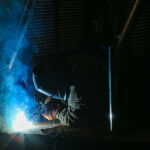
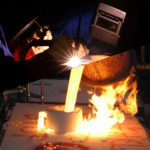

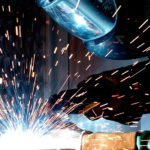
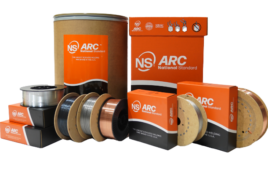


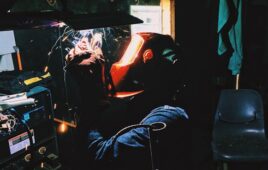
Tell Us What You Think!